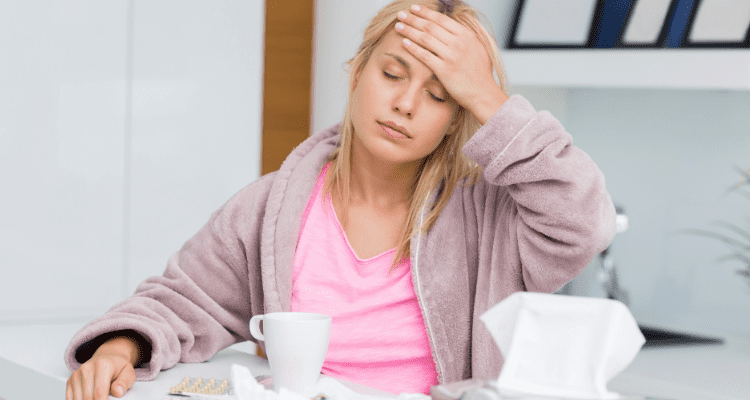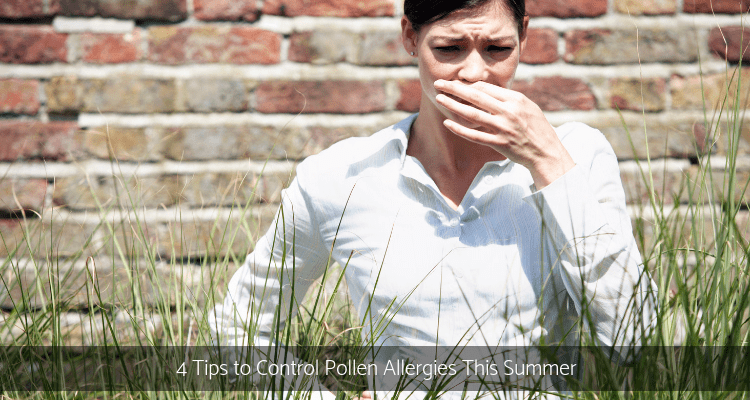If you suffer from pollen allergies then the increased levels of pollen in the air during the summer months can make life difficult. The first step to tackling pollen allergies is determining if you or someone you care for suffers from pollen allergy.

Pollen allergy symptoms
The immediate symptoms of pollen allergic reaction can be sneezing, runny nose, nasal congestion, itchy nose, watery and itchy eyes, irritated throat, itchy skin or hives ACCAI, WebMd (2018). Those allergic to pollen may experience episodes of asthma and hay fever. Hay fever symptoms such as pain in the face, eyes becoming sensitive to light, feeling tired, headaches, or wheezing can take several hours to appear. You may experience only one of these pollen allergy symptoms. In fact, if you haven’t been medically diagnosed you may mistake the allergic reaction to pollen for a common cold or cough. Consult an allergist for a confirmed diagnosis of pollen allergies. People can also have skin rashes (hives or skin welts) after exposure to grasses, but this is much less common.
How do you control it?
Summertime is when grass pollen allergies are at their worst. There are an estimated 1,200 varieties of grass, but only a small percentage cause pollen allergies AAAAI (nd). With the wind carrying pollen from grasses, weeds and trees into your home, office, car, and on to your clothes, preventing exposure to pollen can be tricky. It’s different from pollen that gets moved around by insects, so you are more likely to breathe it in and thus develop symptoms. You can however take several steps to avoid a pollen allergy attack and control pollen allergy symptoms.
1. Medical Tips
Get an allergy test to determine the exact nature of your allergies. This will help you to pinpoint the cause of your symptoms, determine which months of the year your allergies are likely to be aggravated and the type of pollen you are allergic to (e.g. grass, tree, weed or spores) and get welcome relief. ACCAI (2018).
Consult your doctor/ allergist regularly, especially ahead of the summer months to ensure that you are taking the right medicines and dosage. You may be advised to take allergy shots at the start of summer.
2. General Precautions
Here are some general precautions to avoid pollen exposure:
- The presence of pollen tends to be highest from early morning to mid-morning. Stay indoors during this time to the greatest extent possible.
- Avoid the outdoors on windy days and during thunderstorms.
- Stay away from activities such as mowing the lawn that increase your exposure to pollens. Don’t garden on windy days when pollen may be in the air.
- Shower a couple of times a day during summers.
- Close the car windows and the external air circulation vent while travelling by car. Vacuum your car regularly.
- Machine-dry your laundry instead of hanging clothes outside where they may collect pollen.
- Choose a summer holiday location that is relatively pollen free such as a place near the sea.
3. Home maintenance tips
- Keep the doors and windows at home closed as much as possible.
- Use air conditioners at home.
- Clean your house with a microfibre cloth and an HEPA filter vacuum cleaner.
- Get rid of old unused books, clothing, furniture, and other things that may simply be gathering dust in the house.
- Change your bed sheets and pillow covers every few days, washing the used ones in hot water.
- Remove your shoes at the entrance of your home.
4. Pollen allergy control dietary tips
If you are not allergic to spices; cayenne peppers, horseradish and garlic can help reduce the congestion caused by pollen allergies. Drinking hot water with lemon and honey, or herbal tea will also ease the inflammation.
Be careful about what you eat, as depending on the type of pollen allergy you may be allergic to certain fruits, vegetables, and nuts.
Do you know of other ways to fight pollen allergies? Let us know in the comments below.
Towards healthier living Carol Parr ♥
References
ACAAI Public Website. (2018). Pollen Allergy. [online] Available at: https://acaai.org/allergies/types-allergies/pollen-allergy [Accessed 14 Sep. 2019].
WebMD. (2018). Spring Allergies. [online] Available at: https://www.webmd.com/allergies/spring-allergies#1 [Accessed 14 Sep. 2019].
The American Academy of Allergy, Asthma & Immunology. (n.d.). Mowing Down Your Grass Allergies | AAAAI. [online] Available at: https://www.aaaai.org/conditions-and-treatments/library/allergy-library/grass-allergies [Accessed 14 Sep. 2019].
This page was reviewed for accuracy 14/9/19.
As a result of working with me, women and their families thrive, work places and their personnel prosper, mouldy and chemical / electrical sensitive occupants heal. They’re healthier, they’re alert, they’re happier, more relaxed, more productive, and enjoying life.
Together we bring about healthy indoor environments and create rooms that provide calmness, healthy sleep, relaxation and restored energy for you and your family, create workplaces that provide ideal personnel attendance and elevated productivity.
By returning indoor spaces to more natural conditions, we strengthen you and your family and your personnel’s mind, body and spirit. It’s nice that it also sustains our planet’s ecology, you’d agree.
You can find my latest enterprises by clicking here: http://www.linkedin.com/in/carolparr
Author
-
We’re glad you’re here. We’re Carol and Tony, founders of one of the longest running Healthy Home Blogs in the world, Mitey Fresh Australia. We’ve been on this journey for the last 25 years and are passionate about helping families sift through health hazards and triggers like allergens, mould, water damage, chemicals and EMFs, to get clarity about what’s toxic and what’s not so they can create a healthy and happy home for their family they love. Each month, people visit this blog seeking focus on the health and wellbeing of their loved ones, sustainable and effective practice tips and guides, to help create and manage healthier indoor spaces, improve the built environment that is pleasing to the senses and support healthy living and nature, every day. Starting this blog was to help change people’s lives, one family at a time, and we can’t wait to share how its allowed us to stand next to you and show you how interpreting these synergies between buildings and the environment they are built in will impact upon the health and well-being of those who occupy them. Find out more about Healthy Homes and what this blog can do for you!





